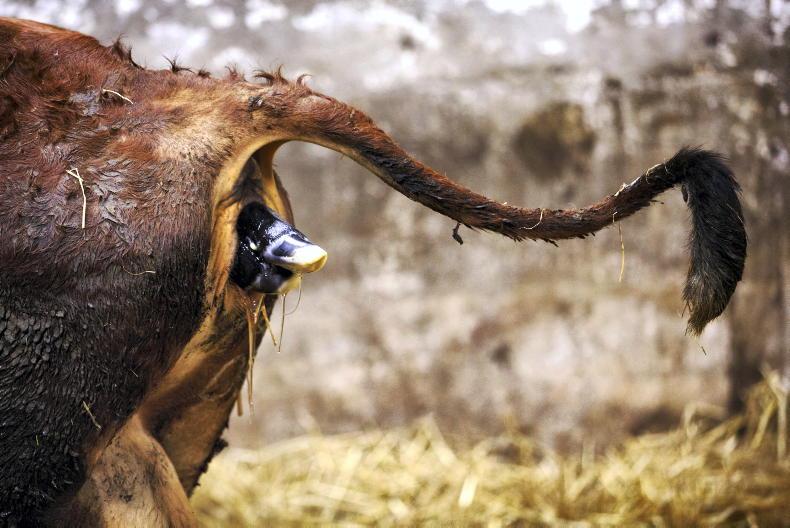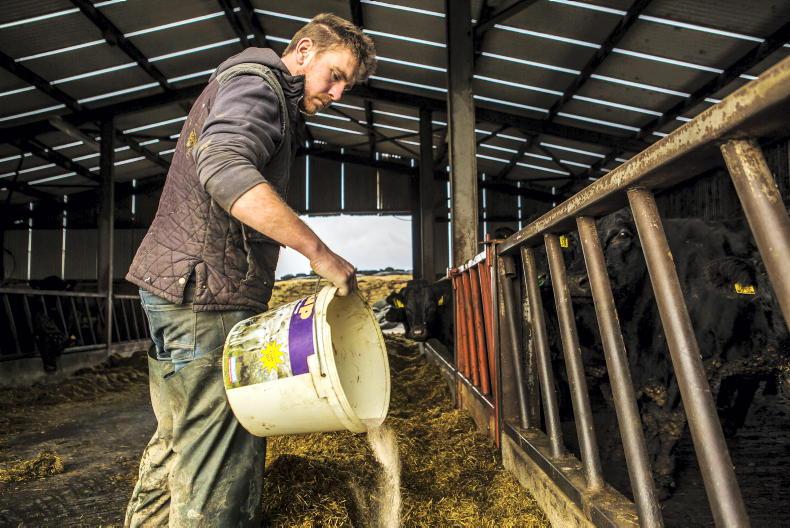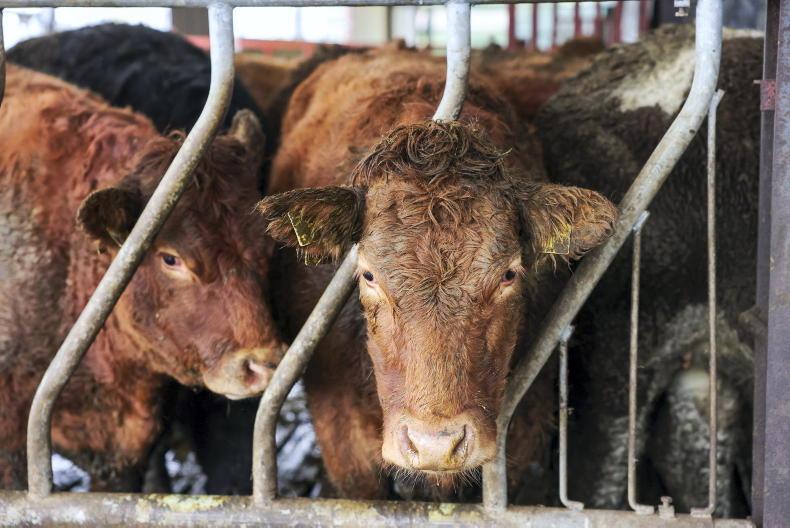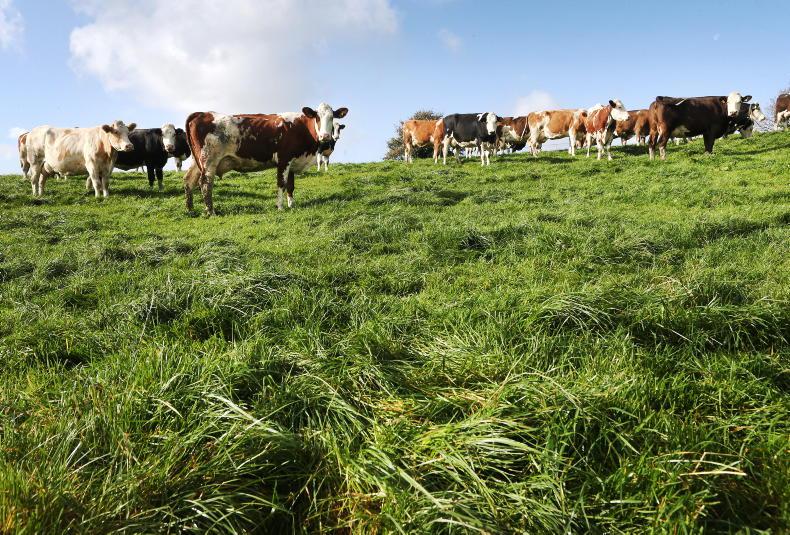While the majority of cows should calve unassisted, there will be occasions when it is necessary to step in and assist delivery of the calf.
While most interventions will be straightforward, every now and then the problem will require veterinary intervention. Knowing your limits at calving time is important.
Experienced farmers will know at the outset whether a calf can be safely delivered or whether the vet will be required.
The main thing to remember is that if you have any doubts, phone the vet. Do not try to calve the cow if you are unsure about what you are doing.
Outlined are 10 tips for dealing with the more common problems that are experienced when calving cows.
1 Know what you dealing with
As soon as a problem is encountered, it is important to know what is the causing the issue and how to intervene.
If the fluids in the bag are reddish-brown or cloudy, then step in immediately, as the calf is distressed.
If the cow is making no progress two hours after passing the water bag, then intervention is necessary.
Look for the tell-tale signs of calving problems. For example, the front feet being crossed is a sign of a big calf. If the tongue is out and swollen, alarm bells should be ringing.
Think about previous calving experiences for certain cows or a particular stock bull
Legs facing down or a head lying backwards can be rectified by experienced farmers. If the calf is coming backwards, the advice will be to involve the vet from the start.
Think about previous calving experiences for certain cows or a particular stock bull.
If the bull has a history of calves sticking at the hips, then call for help early. It is better to call the vet early than to adopt a try-and-see approach that leaves you with a dead calf, or limited options when the vet is eventually called.
If the lower part of the leg is down, it needs to be corrected before the calf can be born.
Wear a glove and use plenty of lubricant before reaching the inside of the cow.
Cup the hand around hoof, raise the leg upwards by bending at the shoulder joint and pull forward.
If the full leg is backwards, this takes experience and patience to correct
Cupping the hand around the hoof reduces the risk of damaging the cow internally.
If the full leg is backwards, this takes experience and patience to correct. If the calf has to be pushed back inside the cow, attach a calving rope to the properly positioned leg first.
3 Head incorrectly positioned
If both legs are presented but no head, attach the leg ropes and push the calf back inside the cow.
Feel for the head and lift into the position between the front legs. When in place, pull the leg ropes forward to bring the calf into the correct position.
4 Cow is pressing but no water bag
If you notice a cow with its tail raised and visibly pressing, but there is no water bag, there is a strong chance the cow has a twisted uterus.
When placing your hand inside the cow, it is likely to twist and meet resistance. It will be unlikely the calf can be felt by hand. In this instance, the vet will be required to deliver the calf.
If when checking the calf’s position you feel the animal is upside down, phone the vet. Trying to turn the calf can twist or kink the navel chord, suffocating the calf.
A calf coming backwards increases the chance of the animal being dead on delivery, as the navel chord will snap with the calf’s head still inside the cow.
Speed is the key when delivering a calf backwards.
If you do attempt to deliver the calf via its back legs, the calving jack should start at an elevated incline to get the hips out.
If you have any doubts, call for the vet before attaching the jack.
7 Letting the calf breathe when using the jack
If you have to pull the calf with the jack, once the head and shoulders are released, you are past the point of no return.
At this stage, the calf should be able to breathe through its nose and mouth.
If the calf is stuck at the hips and progress is slowing, it is important to let the calf breathe.
At regular intervals, release the tension on the leg ropes.
This will take the pressure off the front legs, relaxing the calf’s lungs and allowing it to breathe.
All too often, farmers panic when the calf is stuck and there is excessive use of the jack, which stretches the calf out.
Pulling the calf’s legs forward under severe force will constrict its lungs and the animal is likely to die within a matter of minutes.
If the calf is stuck at the hips, the cow is likely to be down. Use the bar of the jack to lever sideways, with the aim of releasing one hip at a time.
Lever the bar smoothly. Do not bounce or jerk.
If the calf can be rotated, this can help release the hips.
After a hard calving, there is an increased risk of a cow suffering from a prolapsed uterus. If this happens, the vet will be required immediately.
10 Pain relief and cow care
In most instances after a hard calving, all the attention goes on resuscitating the calf. But do not forget about the cow.
After a difficult labour, check the cow for internal bleeding. Giving pain relief will help the cow to get up, lick the calf, drink and feed.
Read more
Spring calving series: click for tips and advice
When to intervene when calving the cow
While the majority of cows should calve unassisted, there will be occasions when it is necessary to step in and assist delivery of the calf.
While most interventions will be straightforward, every now and then the problem will require veterinary intervention. Knowing your limits at calving time is important.
Experienced farmers will know at the outset whether a calf can be safely delivered or whether the vet will be required.
The main thing to remember is that if you have any doubts, phone the vet. Do not try to calve the cow if you are unsure about what you are doing.
Outlined are 10 tips for dealing with the more common problems that are experienced when calving cows.
1 Know what you dealing with
As soon as a problem is encountered, it is important to know what is the causing the issue and how to intervene.
If the fluids in the bag are reddish-brown or cloudy, then step in immediately, as the calf is distressed.
If the cow is making no progress two hours after passing the water bag, then intervention is necessary.
Look for the tell-tale signs of calving problems. For example, the front feet being crossed is a sign of a big calf. If the tongue is out and swollen, alarm bells should be ringing.
Think about previous calving experiences for certain cows or a particular stock bull
Legs facing down or a head lying backwards can be rectified by experienced farmers. If the calf is coming backwards, the advice will be to involve the vet from the start.
Think about previous calving experiences for certain cows or a particular stock bull.
If the bull has a history of calves sticking at the hips, then call for help early. It is better to call the vet early than to adopt a try-and-see approach that leaves you with a dead calf, or limited options when the vet is eventually called.
If the lower part of the leg is down, it needs to be corrected before the calf can be born.
Wear a glove and use plenty of lubricant before reaching the inside of the cow.
Cup the hand around hoof, raise the leg upwards by bending at the shoulder joint and pull forward.
If the full leg is backwards, this takes experience and patience to correct
Cupping the hand around the hoof reduces the risk of damaging the cow internally.
If the full leg is backwards, this takes experience and patience to correct. If the calf has to be pushed back inside the cow, attach a calving rope to the properly positioned leg first.
3 Head incorrectly positioned
If both legs are presented but no head, attach the leg ropes and push the calf back inside the cow.
Feel for the head and lift into the position between the front legs. When in place, pull the leg ropes forward to bring the calf into the correct position.
4 Cow is pressing but no water bag
If you notice a cow with its tail raised and visibly pressing, but there is no water bag, there is a strong chance the cow has a twisted uterus.
When placing your hand inside the cow, it is likely to twist and meet resistance. It will be unlikely the calf can be felt by hand. In this instance, the vet will be required to deliver the calf.
If when checking the calf’s position you feel the animal is upside down, phone the vet. Trying to turn the calf can twist or kink the navel chord, suffocating the calf.
A calf coming backwards increases the chance of the animal being dead on delivery, as the navel chord will snap with the calf’s head still inside the cow.
Speed is the key when delivering a calf backwards.
If you do attempt to deliver the calf via its back legs, the calving jack should start at an elevated incline to get the hips out.
If you have any doubts, call for the vet before attaching the jack.
7 Letting the calf breathe when using the jack
If you have to pull the calf with the jack, once the head and shoulders are released, you are past the point of no return.
At this stage, the calf should be able to breathe through its nose and mouth.
If the calf is stuck at the hips and progress is slowing, it is important to let the calf breathe.
At regular intervals, release the tension on the leg ropes.
This will take the pressure off the front legs, relaxing the calf’s lungs and allowing it to breathe.
All too often, farmers panic when the calf is stuck and there is excessive use of the jack, which stretches the calf out.
Pulling the calf’s legs forward under severe force will constrict its lungs and the animal is likely to die within a matter of minutes.
If the calf is stuck at the hips, the cow is likely to be down. Use the bar of the jack to lever sideways, with the aim of releasing one hip at a time.
Lever the bar smoothly. Do not bounce or jerk.
If the calf can be rotated, this can help release the hips.
After a hard calving, there is an increased risk of a cow suffering from a prolapsed uterus. If this happens, the vet will be required immediately.
10 Pain relief and cow care
In most instances after a hard calving, all the attention goes on resuscitating the calf. But do not forget about the cow.
After a difficult labour, check the cow for internal bleeding. Giving pain relief will help the cow to get up, lick the calf, drink and feed.
Read more
Spring calving series: click for tips and advice
When to intervene when calving the cow










SHARING OPTIONS